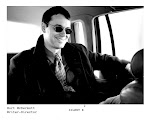 |
| The Everleigh Club, 1911 2131–2133 South Dearborn Street, the Levee |
This is a free town.
- Carter Harrison
Around 1900 the term segregation referred to the
geographical segregation of certain activities, such
as prostitution and gambling, within islands of illicit
activity in the city rather than to the separation of
the races. Many people believed that such areas
were necessary "safety valves" for male behavior,
which without a safe outlet would threaten not only
the stability of marriage and the family but would
also put women at greater risk of being objects of
male aggression.
To our point of view today, most American cities,
were much more vice-ridden then than now. This
would include New York, despite the presence there
of such powerful do-gooders as Anthony Comstock
and police chief Theodore Roosevelt.
But even by the standards of the day, Chicago was
considered particularly wide open and sinful. The
mayor at the time of the 1893 Worlds Fair, Carter
Harrison Sr, said "You couldn't make people moral
by ordinance, and it is no use trying. This is a free
town."
Chicago was so notorious that reformers came all the
way from London to battle the modern Babylon.
The most famous English intervention may be
evangelist Gypsy Smith's march through the "Levee,"
the heart of the vice district in 1909, but as early as
1894 William Stead* published If Christ Came to
Chicago, an impassioned attack on Chicago's
permissive culture which so generously remunerated
the ruling political class.
Stead wrote well, and there are echoes of his work in
The Expert at the Card Table, which indicate Erdnase
may have read If Christ Came to Chicago. Here, for
instance, is the opening lines of Erdnase's introduction
of The Expert:
The passion for play is probably as old,
and will be as enduring, as the race of man.
Some of us are too timid to risk a dollar,
but the percentage of people in this feverish
nation who would not enjoy winning one is
very small.
Compare this to Stead's words
The love of gambling is almost as deep-
seated in the human nature as the animal
appetite on which the race depends for
its preservation and multiplication. The
craving for excitement; the longing to be
suddenly rich without exertion or
expenditure are too deeply seated to be
expunged by municipal ordinances....
Though by and large the reformers were more interested
in ending prostitution than gambling, Minna Everleigh,
one of the proprietors of the Everleigh Club, the most
exclusive brothel in the Levee found she had to limit
her patrons' access to the gaming tables to just 30 minutes
at a time, noting of her "... potential Don Juans ...they'd
rather most of the time gamble than screw." These Don
Juans reportedly included such luminaries as Theodore Dreiser,
Ring Lardner, and boxing champion Jack Johnson.
 | |
| Entrance Hall |
It was most probably while gambling at the Everleigh Club
that the heir to the Marshall Field fortune was shot. He
was found by his family back in his room at home where
he claimed he had accidentally shot himself. The wound turned out to be fatal. The inquest ruled accidental death.
In any case, Erdnase and Chicago were very well suited to each other.
Not only were both thoroughly amoral, but both believed in accepting the consequences of such a stance. From the judge who refused to jail two prostitutes who beat up an elderly patron to rob him of $5, because having ventured into the vice district, he should know what to expect, to the nonchalance with which his family and the municipal authorities shrugged off the death of Marshall Field Jr to Erdnase's refusal to feel bad for players cheated at cards, including himself as a young "unlicked cub", their attitude remains a consistent acceptance of the price you pay to live such a life.
*Like Daniel Burnham, the architect behind the Chicago's Worlds Fair, William Stead died on The Titantic. For more on the Worlds Fair & Erdnase, see my post of 3/16/2012


